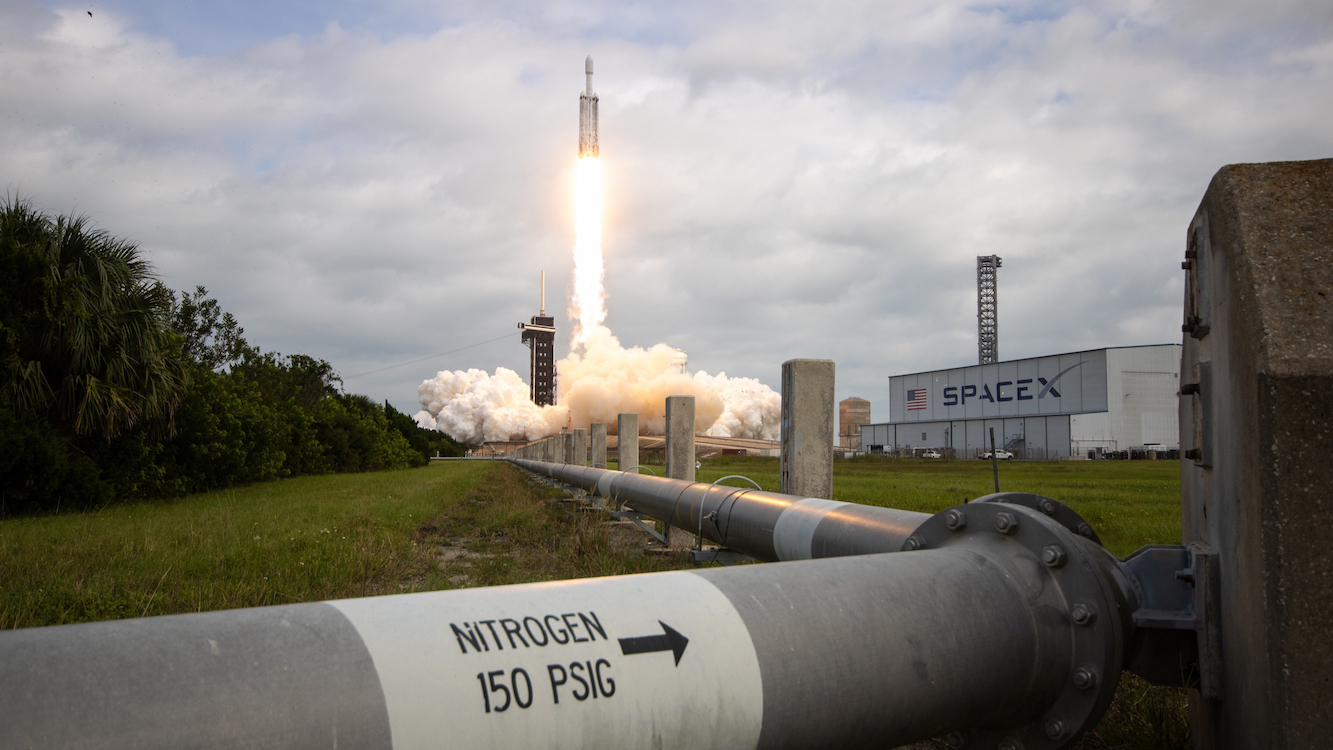
This week we are tracking the possibility of seeing seven launches from both the United States and China. On the US side, all of those launches will be coming from SpaceX with three being Starlink and one being a Falcon Heavy for the Space Force.
This week’s launches:
- Monday (Dec. 4)
- Galactic Energy Ceres-1 Unknown Payload, 6:45 P.M. ET
- Site 95A, Jiuquan Satellite Launch Center, China
- Galactic Energy Ceres-1 Unknown Payload, 6:45 P.M. ET
- Tuesday (Dec. 5)
- CASC Jielong-3 Unknown Payload, 2:30 P.M. ET
- Barge, Chinese Coastal Waters
- CASC Jielong-3 Unknown Payload, 2:30 P.M. ET
- Wednesday (Dec. 6)
- Landspace ZhuQue-2 Flight 3, 6:45 P.M. ET
- Site 96, Jiuquan Satellite Launch Center, China
- SpaceX Falcon 9 Starlink Group 6-33, 11:00 P.M. ET
- SLC-40, Cape Canaveral Space Force Station, Florida
- Landspace ZhuQue-2 Flight 3, 6:45 P.M. ET
- Friday (Dec. 8)
- SpaceX Falcon 9 Starlink Group 7-8, TBD
- SLC-4E, Vandenberg Space Force Base, California
- SpaceX Falcon 9 Starlink Group 7-8, TBD
- Sunday (Dec. 10)
- SpaceX Falcon Heavy USSF-52, TBD
- LC-39A, Kennedy Space Center, Florida
- SpaceX Falcon 9 Starlink Group 6-32, TBD
- SLC-40, Cape Canaveral Space Force Station, Florida
- SpaceX Falcon Heavy USSF-52, TBD
Join our Discord Server: Join the community with forums and chatrooms about space!
Top spaceflight news this week
- SpaceX acquires its parachute vender out of bankruptcy for $2.2 million
- Blue Origin’s New Glenn rocket hardware seen outside Florida factory
- A 60 year old rocket engine is getting a face lift with 3D printing
- Amazon is launching Kuiper satellites on its competitor’s rocket, but why?
SpaceX’s next Falcon Heavy in the works
In its hanger down at LC-39A, SpaceX has a fully integrated Falcon Heavy rocket awaiting launch as soon as this weekend.
The Falcon Heavy takes two extra Falcon 9 boosters and straps them onto the side to provide extra lift to deploy payloads that are heavier to higher orbits (remember this for later). We expect this to be the last Falcon Heavy mission of the year.
Flying inside the Falcon Heavy’s payload fairings will be the Air Force‘s X-37B reusable spaceplane. Flying since 2010, this will be the spaceplane’s seventh flight and a first on SpaceX’s Falcon Heavy. The mission details are mostly classified, with the only payload known to be on it being Seeds-2. A NASA sponsored experiment to expose plant seeds to the elements of space.
So why the Falcon Heavy this time around? In the X-37B’s previous six launches, it has flown on the Atlas V‘s lighter variant (501) and a Block 4 Falcon 9. It has never needed the extra power of heavy lift rockets.
The X-37B could be getting launched into a much higher orbit than previous missions, requiring the extra lift. In a statement, the Space Force stated tests will including operating the X-37B in “new orbital regimes.”
Each mission of the classified spaceplane has seen an increase in mission duration, we don’t know if that will continue, but if it does, we might not see the vehicle come back and land for several years. The OTV-6 mission was in space for over 900 days!
Will SpaceX reach its 2023 goal?
Last year Elon Musk said that SpaceX was hoping for 100 Falcon 9 launches by the end of 2023. So far the company has gotten extremely close to meeting that mark.
Launching once every 3.79 days, the company has completed 89 Falcon 9 and Heavy missions so far. If all the missions go off as planned this week, that number will jump up to 93, with plenty of time left in the year to round it off at 100.
I’ll be honest, I was a pretty big nay sayer through out the year that the company was going to be able to hit its goal. But if all goes well, it looks like that SpaceX will be doing just what it said, just in time for a New Year celebration.
FTC: We use income earning auto affiliate links. More.

Comments